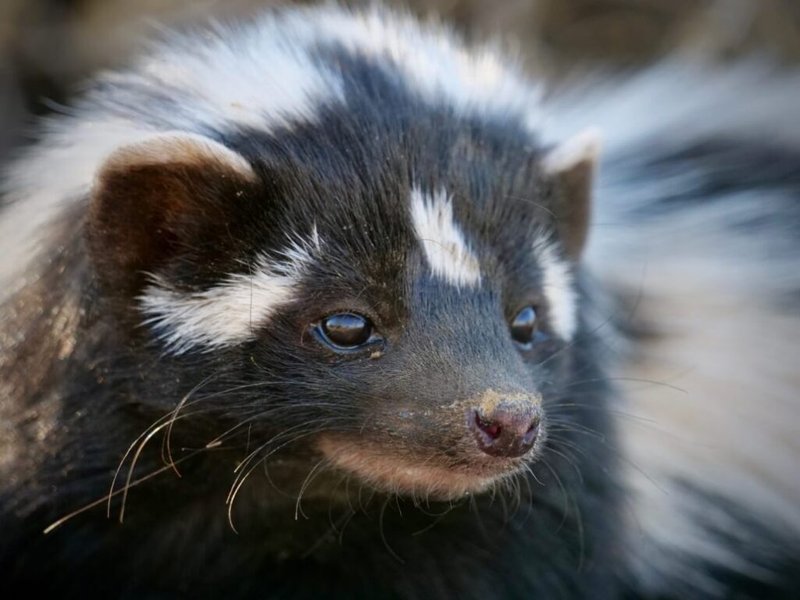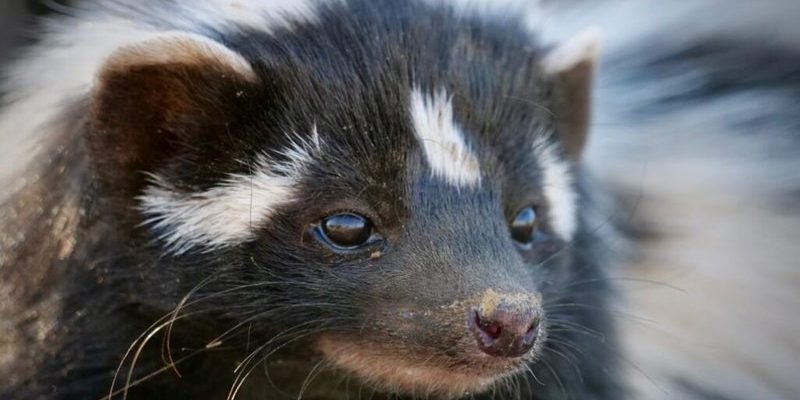
The way the zorilla is represented in culture often reflects human values, fears, and humor. It’s a bit like a character in a story that embodies certain traits or serves a purpose in a lesson. Think of it as the quiet friend who surprises everyone with their wisdom or unique perspective. So, let’s dive into how the zorilla features in tales and traditions, painting a picture of its significance in different contexts.
Understanding the Zorilla: A Brief Overview
Before we explore its cultural significance, let’s get to know the zorilla a bit better. The zorilla, scientifically known as *Ictonyx striatus*, is often mistaken for a skunk due to its similar coloration and size. This small carnivore is known for its remarkable spray defense mechanism, which can deter even the most formidable predators. It’s like having a secret weapon up its sleeve!
In the wild, zorillas thrive in a variety of habitats, from grasslands to wooded areas. They’re solitary animals, primarily nocturnal, which makes them all the more elusive. You might be wondering how such a creature earns a place in folklore. Well, it’s precisely its unique characteristics and behaviors that have made it a subject of fascination in many cultures.
Zorilla in African Folklore
In various African cultures, the zorilla holds a special place in folklore. For some communities, it symbolizes cleverness and resourcefulness. Tales often depict the zorilla outsmarting larger animals, which teaches the lesson that wit can sometimes triumph over brute strength.
For instance, in some stories, the zorilla might cleverly evade a lion, showcasing its survival skills. Such tales often emphasize the value of cunning over power, resonating strongly with themes found in many cultures around the world. It’s a reminder that being clever can help you navigate challenges in life more effectively than sheer force.
Traits of the Zorilla in Folklore
The zorilla is often noted for its distinct traits in these stories:
- Defensive Mechanism: Its ability to spray a foul-smelling liquid is often exaggerated in tales, turning it into a hero who uses its unique skills to ward off danger.
- Stealthiness: Many stories highlight its stealth and ability to move unseen, emphasizing the importance of being observant and patient in achieving one’s goals.
- Resourcefulness: The zorilla’s knack for finding food in tough situations makes it a symbol of resilience and adaptability.
These traits not only add to the character of the zorilla but also offer moral lessons that resonate with audiences.
The Zorilla as a Trickster Figure
In several African tales, the zorilla takes on the role of a trickster. It serves a narrative purpose similar to that of the coyote in Native American stories or the fox in European fables. This clever character often finds itself in humorous, unexpected situations, teaching lessons about humility and cunning.
You might come across stories where the zorilla tricks other animals, not out of malice, but to teach them a lesson about being too proud or overconfident. These tales are often laced with humor, making them entertaining while driving home important life lessons. It’s fascinating how this small creature can pack such a punch in storytelling!
Zorilla’s Representation in Western Culture
The zorilla may not be as prominent in Western folklore, but its unique traits have sparked interest. Often, it is featured in documentaries and nature shows, where its defensive tactics and quirky behavior are highlighted. You could say it garners a certain admiration for its resourcefulness, even if it doesn’t have a starring role in classic stories.
In popular culture, the zorilla might pop up in discussions about exotic pets or animal behavior, particularly among wildlife enthusiasts. Its striking appearance and fascinating habits make it a subject of intrigue, often leading to conversations about its ecological role and conservation status.
Comparing Zorillas to Other Similar Animals
When we think about how the zorilla compares to other animals, particularly the skunk, it can sometimes be a little funny. While skunks are often seen as pests due to their potent spray, zorillas are viewed as cunning creatures that outsmart their challenges. This comparison highlights how culture shapes our perceptions of animals.
For example, while skunks might symbolize something to avoid in North America, zorillas represent cleverness and survival in African narratives. It’s a subtle reminder that context matters when it comes to storytelling!
Zorilla in Literature and Modern Media
In literature, the zorilla isn’t a common character, but it occasionally appears in wildlife narratives or children’s books aimed at educating about African fauna. These stories often paint the zorilla in a positive light, emphasizing its cleverness and adaptability.
You might find it in children’s books where the message is about being resourceful or thinking outside the box. In these tales, the zorilla often triumphs through wit rather than strength, reinforcing that intelligence can lead to great outcomes.
Documentaries Featuring the Zorilla
Documentaries are another excellent avenue through which the zorilla gains visibility. Many wildlife shows focus on the unique behaviors of the zorilla, showcasing its natural habitat and survival tactics. Seeing these animals in their natural environment can shift perceptions and foster appreciation.
These programs often highlight the zorilla’s role in the ecosystem, educating viewers about its importance. It serves as a reminder that even the most overlooked animals contribute to the richness of life on Earth.
The Conservation Message Behind the Zorilla
In recent years, the **zorilla** has also become a symbol for conservation efforts. As habitats are threatened, stories that feature the zorilla often carry messages about protecting wildlife and the environment. This is especially relevant as many species face endangerment due to habitat destruction and climate change.
By keeping the zorilla in the conversation, educators and storytellers can inspire action and awareness around conservation. When we appreciate the significance of creatures like the zorilla, we’re reminded of our responsibility to preserve their habitats.
Community Engagement and Awareness
Organizations focused on wildlife conservation often use the zorilla in campaigns or educational programs. By showcasing this fascinating creature, they engage communities in discussions about biodiversity and environmental protection. These stories resonate with people, encouraging them to get involved and protect endangered wildlife.
When we understand the cultural significance of the zorilla and its representation in folklore, we can appreciate the broader lessons about resilience, cleverness, and the importance of conservation.
Closing Thoughts: The Zorilla’s Cultural Journey
The zorilla may not be a household name, but its representation in culture and folklore reveals a lot about human values and beliefs. From its clever antics in African tales to its role in modern wildlife documentaries, the zorilla symbolizes so much more than just an animal; it embodies the virtues of intelligence, resourcefulness, and the need for environmental stewardship.
So, the next time you hear about the zorilla, remember its journey through stories and cultures. It’s a reminder of the rich tapestry of life and lessons found in our natural world. By appreciating such creatures, we foster a deeper connection to the planet we share and the stories that make us who we are.

